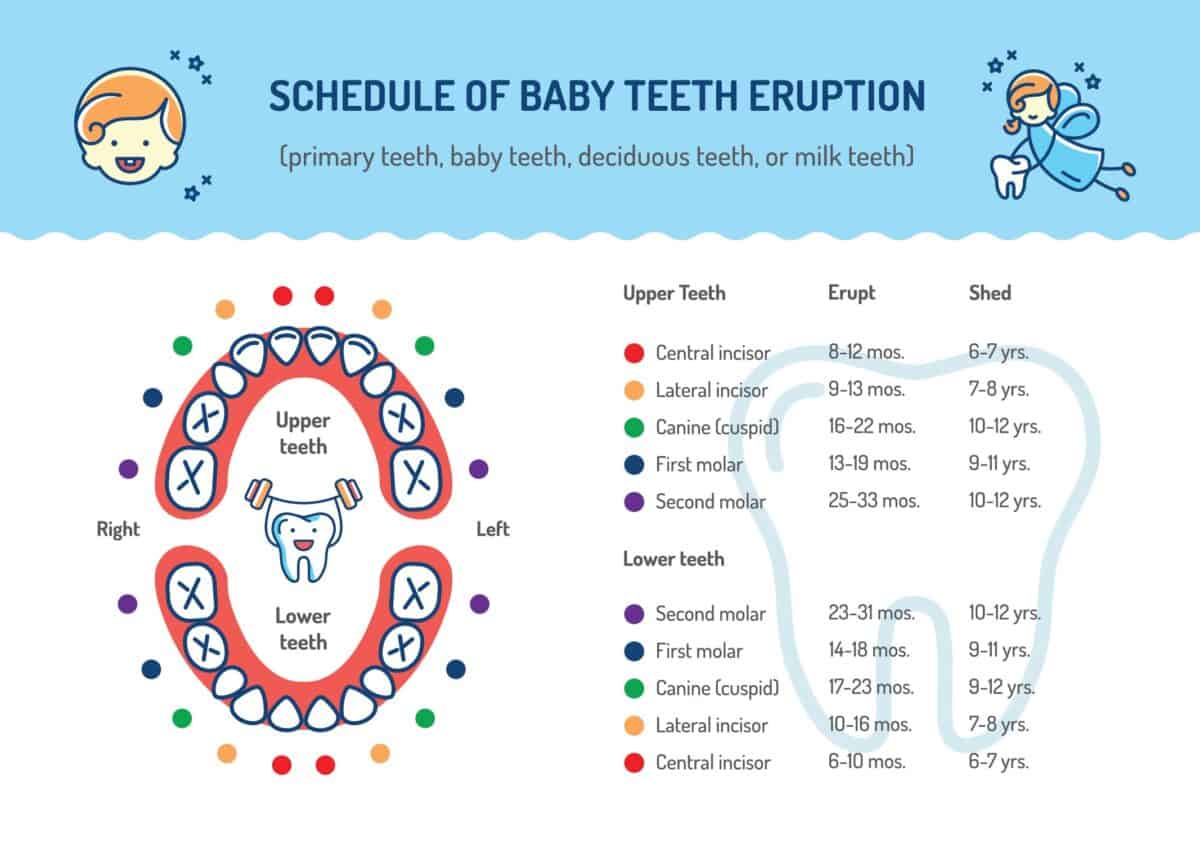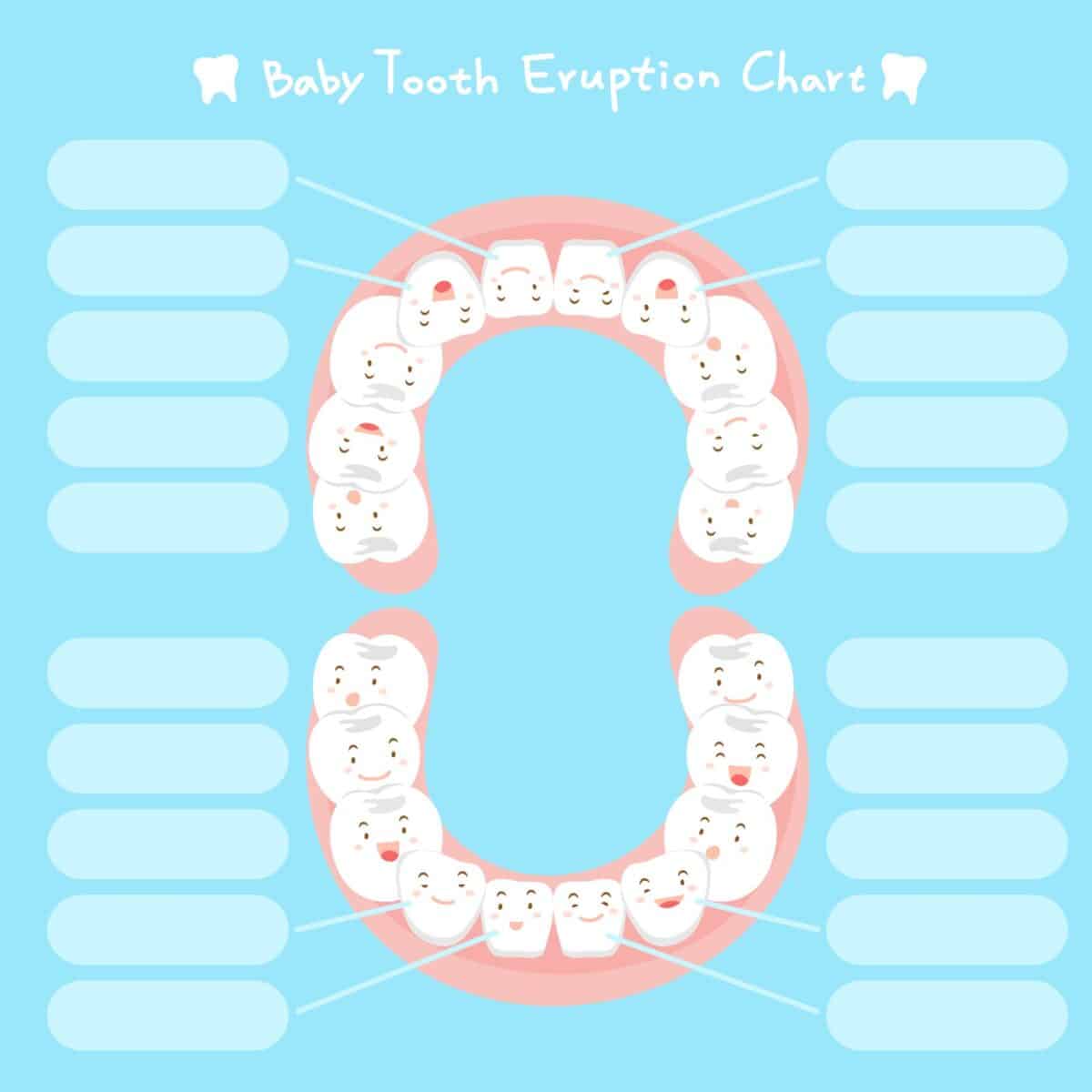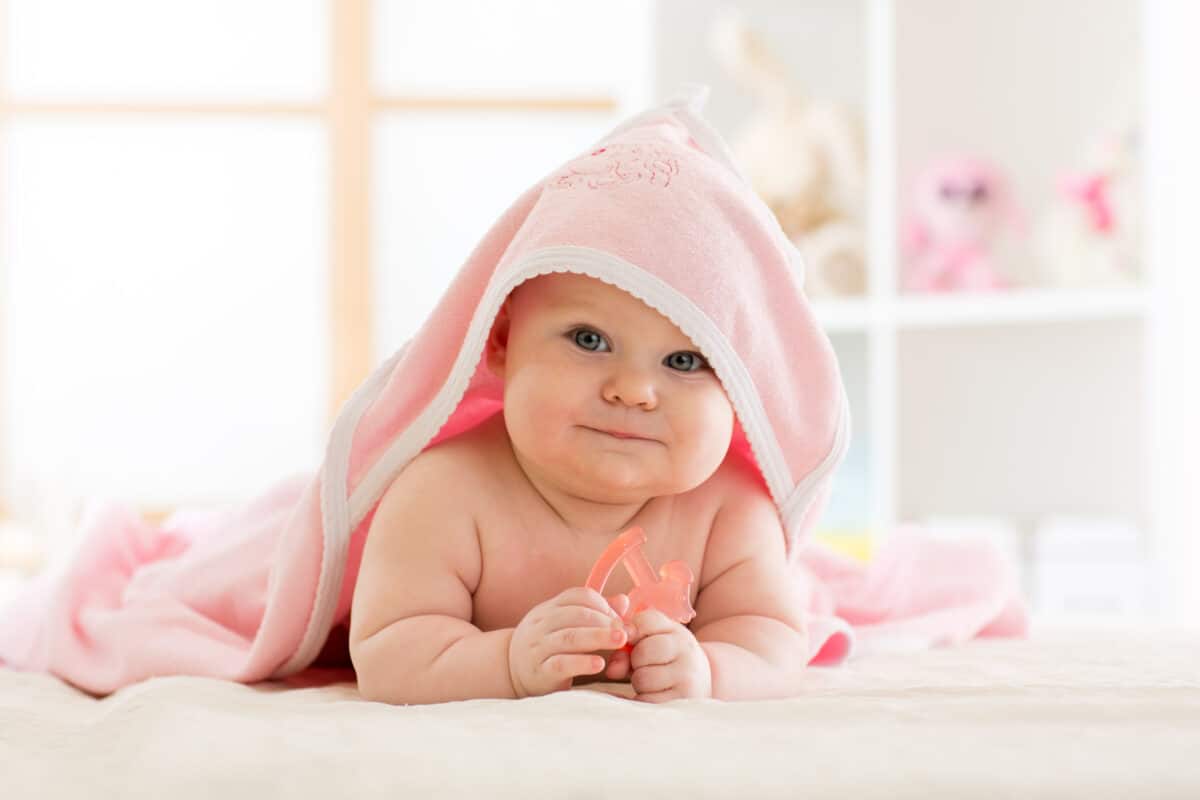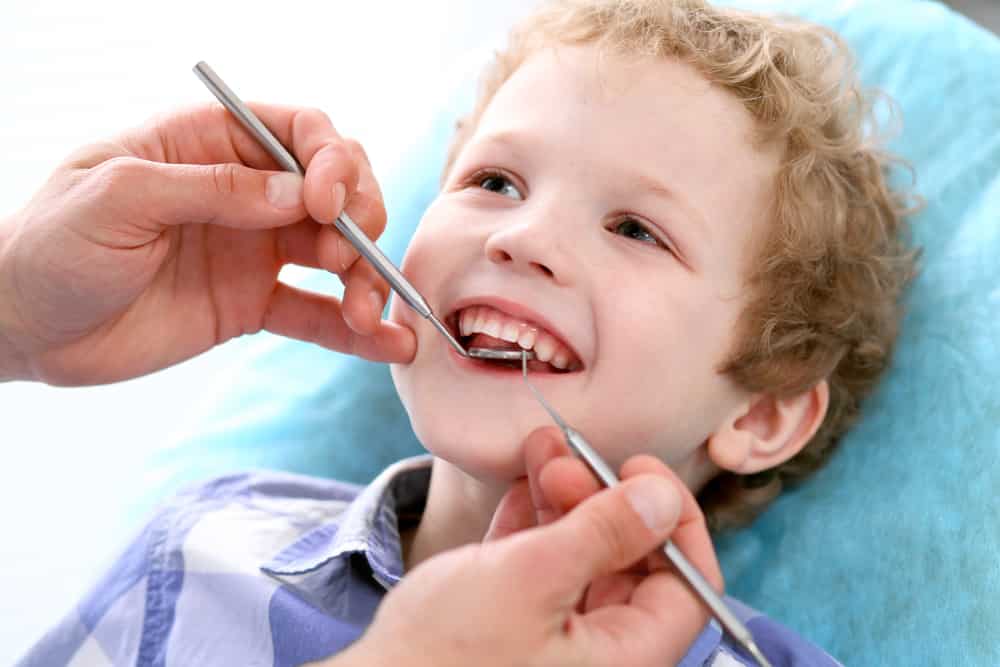As parents, it can be a very exciting moment when our little babies get bigger and start gaining their baby teeth. It can also be a bit alarming if you aren’t prepared. What you need is a tooth eruption chart. These handy guides can tell you what teeth will come in and when. Many also help you to keep track of the teeth they have so far so you can be ready for what comes next. Today, we will present you with a free tooth eruption chart and advice on how you can prepare for this exciting time and make the most of the process.
Why Do We Grow Baby Teeth?
There is a lot of confusion as to why we grow baby teeth (also known as primary teeth) in the first place just so they can fall out and be replaced. Of course, we all need teeth to chew, and we also need them to support speech development as we age. When a baby is born, their primary teeth are already present in the jaws. Then, they start to erupt between 5 and 12 months of age.
Essentially, these are placeholders for their future, permanent teeth. By the time your child is 3 years old, they will have 20 primary teeth.
The first eruption chart below will show you when you can expect each tooth to come in. You can use the second chart to notate which teeth have already come in and which you can still expect to see.

This tooth eruption chart will show you an estimated time of when you can expect to see each tooth emerge.
©iStock.com/decobrush

This additional chart provides you with spaces where you can write down which of the teeth has emerged so far and the date.
©iStock.com/Lin Shao-hua
Eruption Schedule
The eruption chart above will give you an idea of when you can expect each tooth to come through. Granted, this is not a guarantee, and teeth can come in sooner or later than this chart describes, but don’t fret. As you can see, most kids can expect their central incisor to come through at about 6 months. Typically, the last tooth to come through is the second molar on their top set of teeth, and you can expect that at about 33 months.
Tooth Eruption Facts
Here are some other tooth eruption facts to keep in mind along the way:
- Girls typically experience tooth eruption before boys.
- In general, you can expect four teeth to erupt every 6 months.
- Lower teeth typically erupt before upper teeth.
- Baby teeth are typically whiter in color than permanent teeth.
- The teeth will erupt in pairs. (If you see one, then the other is close behind)
When To Expect Permanent Teeth
The eruption of the permanent teeth is a different schedule. Many kids will grow their first permanent molar at about 6 years of age. Most kids should have all of their permanent teeth at about 12 years of age.
There is also a chance that your child could grow wisdom teeth. This won’t happen for all people. However, if your child does grow a wisdom tooth (third molar), then it typically doesn’t happen until around 21 years of age. These teeth are often removed by a dentist.
Why Do We Lose Baby Teeth?
Of course, the next step is to watch those baby teeth get loose one by one and then fall out. Then, they will be replaced by the permanent teeth that they keep as adults. You can expect to see your kids start to lose their teeth at between 4-5 years of age. That is because at 4 years old, the bones in your baby’s jaw will begin to grow and enlarge. When that happens, it creates more space for your kid’s permanent teeth to come in.
The real reason that your kid’s teeth start to fall out is that the permanent teeth underneath start to push up during this time. This action forces the roots of their baby teeth to loosen and fall out. This process can take time. You can expect the last baby tooth to fall out at around 12 years of age.
During this time, it is essential that you bring your kids to their regular pediatric dentist.
Understanding the Teething Period

The teething process can be a strange feeling for your child but it not as painful as it may sound.
©Oksana Kuzmina/Shutterstock.com
As each tooth starts to make its way toward the surface, the gum opens up to show the tooth, and it can be a weird feeling. This is the teething period. You will see many children rub their gums during this period, and that is okay.
If your baby starts to cry or fuss a lot during the teething period, then there are a few tricks you can try:
- Rub your clean finger over their gums.
- Give your baby something to chew on, like a teething ring.
- Provide your kids with mushier foods, so they don’t have to chew as much.
Caring For Your Child’s Primary Teeth
Even though the eruption chart will tell you that all of your child’s primary teeth will fall out, it is still essential that you care for their teeth during this time. In reality, baby teeth require the same care and attention as our adult teeth. Flossing, brushing, and regular cleanings with the dentist are essential. Without them, your kids can start to develop infections and dangerous abscesses, and those ailments can cause problems for years to come.
On top of that, if you neglect your kid’s teeth, then they could fall out prematurely. If they do, then they won’t help to create the necessary space for their permanent teeth. If that happens, then the new teeth could erupt incorrectly and crowd the other teeth. This issue would require expensive and often painful cosmetic or restorative procedures.
It is necessary to show your kids the importance of caring for their teeth because they will carry these lessons into adulthood. When it comes to caring for the primary teeth of a child, do the following:
Brush Their Teeth
When your child’s teeth start to pop up, you can start brushing them. Find a brush that is soft with a small head and a large handle. If the bristles of the brush are too hard when it comes out of the package, then run it under warm water for a few minutes to soften it up.
Brush their teeth by gently moving the brush head in a circular motion. Keep the brush head at an angle when you do so. Get both sides of all teeth. You can also gently brush their tongue. Your kids won’t always love the idea of getting their teeth brushed, so try to make it into a game.
To make it as easy as possible, sit a small child on your knee with their head resting on your chest. Have an older children stand up and bend their head backward so you can easily reach all of the teeth.
Flossing Their Teeth
When your baby grows enough teeth that they start to touch (typically around 2 or 3 years of age, then you can start flossing. Before you commence, talk to the dentist, and they will give the go-ahead.
Tear off about 18 inches of dental floss. Wind the ends around your middle fingers. Then use the floss to go up and down between each tooth. When you get to their gum line, curve the floss into a C shape so that it hugs the bottom of one tooth. Then do the other tooth. Do the same process everywhere.
Avoid Sugar
Just like when they are adults, kids need to avoid excessive sugar to keep their teeth in good condition. That means going easy on juice and formula, especially after you have brushed their teeth. Also, avoid putting a baby to sleep with their bottle, as the milk can damage their teeth over time.
Conclusion
We are happy to provide you with this free tooth eruption chart and the guidance that you need during this interesting time of your child’s life. Remember that each kid will be different, but if you follow the guidelines described above, then the process can be much easier for you and your child.
Up Next:
- How To Soothe A Teething Baby At Night, In 3 Steps
- How Many Teeth Does A Child Have At Each Age
- Identifying a Teething Baby
The image featured at the top of this post is ©Andrei_R/Shutterstock.com
